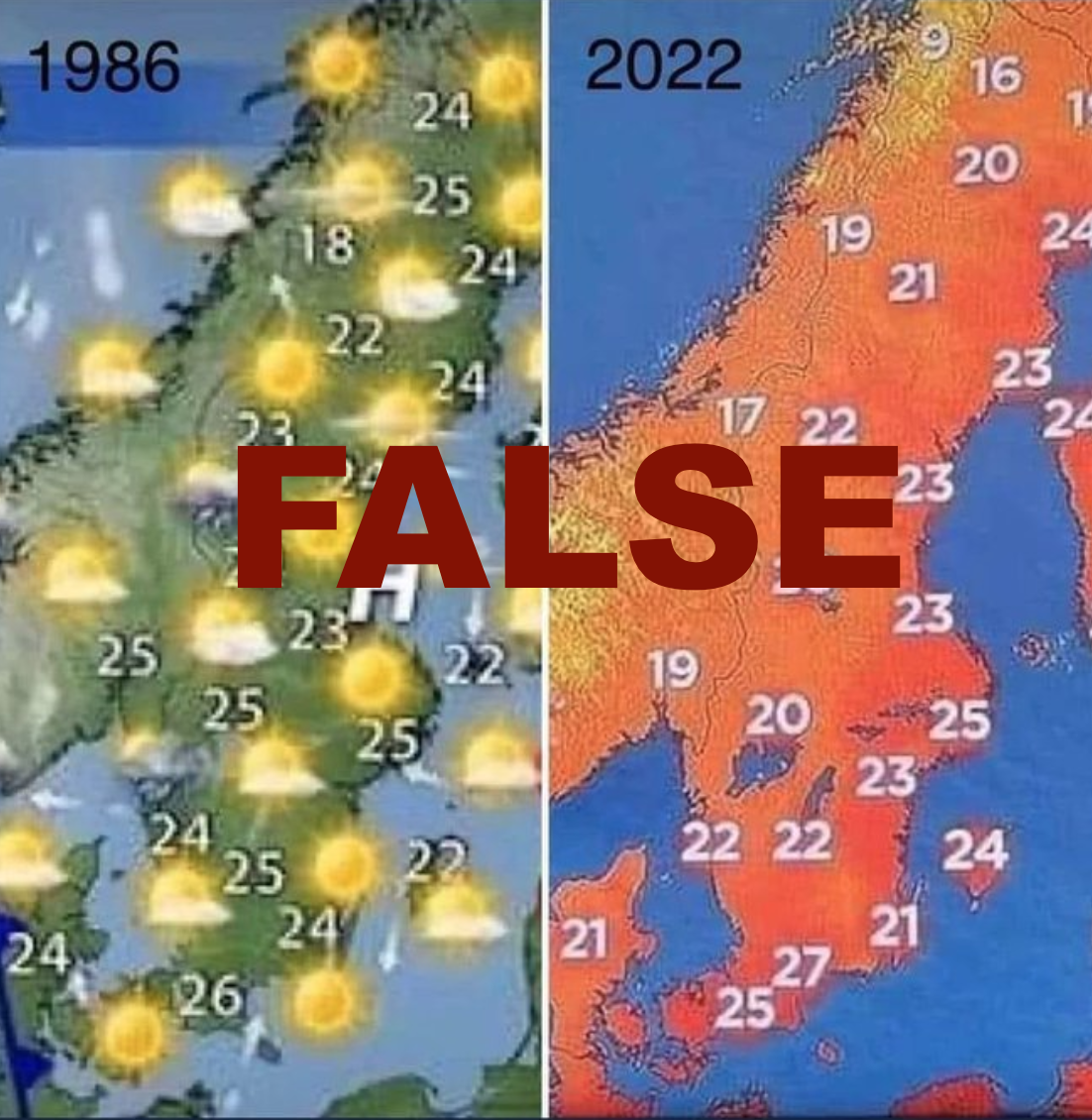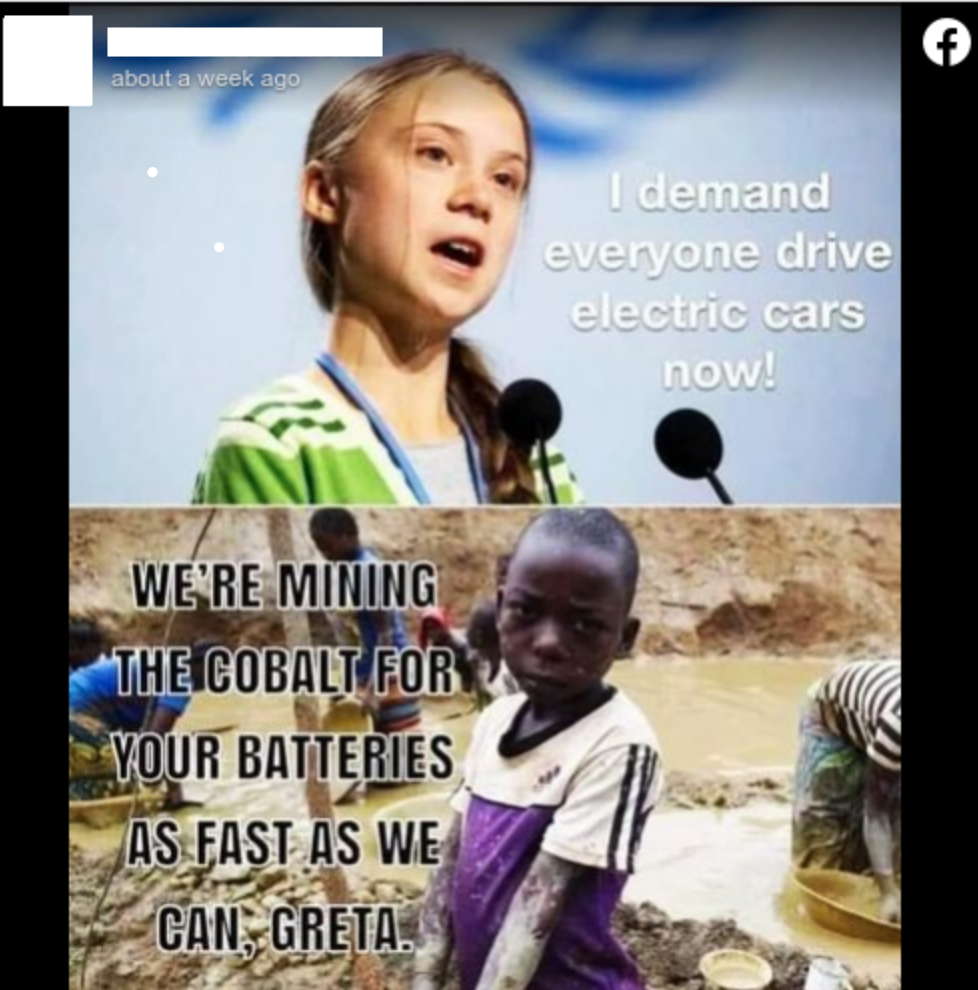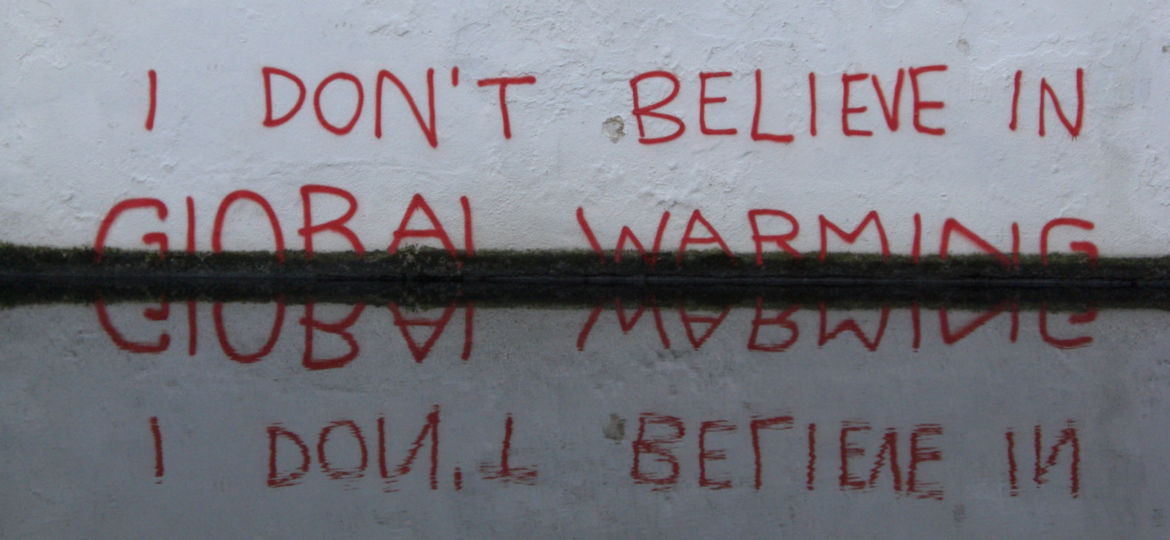Organizations of the EDMO’s fact-checking network that contributed to this analysis: Pagella Politica – Facta.news, 15min, AFP, Correctiv, DPA, EFE Verifica, Factcheck Vlaanderen, Knack, Maldita, Newtral, Nieuwscheckers, Polígrafo, Re:Baltica, Science Feedback, Verificat, VerificaRTVE
Disinformation about climate change is on the rise in the EU in June, as highlighted by the last EDMO monthly brief. The most likely factors contributing to this development are the many news stories aired by traditional media about the ongoing exceptional heat wave, and the fading attention to other topics that dominated the disinformation landscape during the previous months, such as the war in Ukraine and the pandemic.
Four main narratives, often in correlation with each other, are shared as disinformation around climate change: the first denies the existence of climate change, or the human role in it; the second one accuses the traditional media to spread unjustified panic; the third one attacks renewable energies, electric vehicles, and recycling; and the fourth one attacks the climate movement, accusing it of hypocrisy or stupidity.
1. Climate change is not real and/or is not related to human activities
The first narrative conveyed by false news simply denies the existence of climate change, its premises, or its links to human activities.
A first example is the false news – detected in France – about the lack of a justified connection between CO2 emissions in the atmosphere and global warming. The content of this false news comes from the book “Paradoxes de l’écologie punitive et de l’obscurantisme vert” (Paradoxes of the punitive ecology and of the green obscurantism), written by the philosopher Yves Roucaute and published by Cerf. The scientific community, and in particular the Intergovernmental Panel on Climate Change (IPCC), considers these theories as baseless. Just as baseless is a similar misleading story, detected in the Netherlands, which claims that CO2 can’t be responsible for climate change, considering its low levels in the atmosphere and the fact that the planet “naturally” releases CO2. Or the false rumor, detected in Portugal, that only 5% of the global warming is attributable to human activities. Or, again, the false news detected in the UK which claims that global warming has stopped over the past few years.
Another example is the false news – detected in Spain, Portugal, and Lithuania – about the Arctic ice having reached its maximum level of the last 30 years (it hasn’t). Very similar incorrect stories circulated in the Netherlands, about the increase of the Antarctic ice sheet (and about NASA calculations in this regard), and in Belgium, about the increase of Greenland ice sheet. In Spain, the false news about the Arctic ice sheet circulated together with another misleading news which claimed that the number of deaths caused by natural disasters is decreasing, so climate change – assuming it exists at all – doesn’t have a significant impact on our lives.
In Belgium, circulated in June also an image with two TIME magazine covers, one allegedly from 1977 warning about ‘global cooling’ and the other from 2008 warning about ‘global warming.’ The caption invites people to distrust experts who warn about climate change, presenting them as not reliable, but it’s an old hoax: the cover allegedly from 1977 is actually from 2008, and it warns about global warming, not ‘global cooling.’
Other examples are the false story (detected in June in Germany and in Belgium) that attributes climate change to the sun; the false news (detected in Italy) claiming that a single eruption of the Etna volcano emits ten thousand times more CO2 than the amount produced by humanity in all of its history; the false news (detected in Germany) claiming that, considering that in 1904 the river Elbe dried out for a short time, climate change, CO2, and droughts aren’t related; the false story (detected in Spain) claiming that there is no drought in Spain because you can see more water than land from outer space. In Spain, fact-checkers noted that denialism about climate change also entered the political campaign for local elections in Andalucía.
The message shining through this narrative is that we as humans can carry on as we have always have, because the alarm about climate change is baseless or, provided that the phenomenon exists, it is not related to the decisions and the actions of the humankind.
2. Traditional media spread panic through false news and/or manipulated images
Based on the reports of the organizations that contributed to this analysis, the single piece of false news with the largest spread in June in the EU is the one about Swedish temperature maps. More in detail, it involves two temperature maps of Sweden attributed to the years 1986, in green, and 2022, in red (see Image 1). As they show similar temperatures, some social network users claim that traditional media have just “colored red” the same map to be able to label it as “extreme heat”.

This is a hoax: the first map refers to 2016, not 1986, while the second map refers to 2021 and not 2022. The two maps come from different media outlets that normally use different colors, which makes a comparison between the two meaningless; and, most importantly, temperatures in Sweden rose significantly in the past few years.
This false news was detected, in June, in Spain, France, Germany, Netherlands, Poland, Romania, Austria, Belgium, and Hungary.
Similar false news of maps allegedly coloured in red to spread panic were detected in France about France, in Germany about Germany, in Spain about Spain, and in the UK about the UK. In Italy, a similar false rumor was based on a map that allegedly proved that global temperatures are now at the same levels as in the timeframe 1979-2000.
But it’s not always about maps. In Austria and Germany, a lot of disinformation circulated in response to the misquotation of an expert, who said that in the past temperatures higher than 35 degrees Celsius were a rare event. In response, climate change denialists gathered old news headlines, heat maps, and other (often misleading or inaccurate) pieces of evidence to show that hot weather has always existed, and therefore the current situation is not unusual, and climate change is strongly exaggerated by experts and media outlets.
The peculiarity of the narrative conveyed by all these examples of false news is the common effort to discredit traditional media, whose reporting about climate change, according to the disinformation narratives, cannot be trusted, as it only spreads panic and baseless alarmism. At the same time, the false stories mentioned before also convey another narrative, according to which climate change is not real and the current situation wouldn’t be so different from what we have already experienced in the past.
Sometimes, the combination of these two narratives produces actual conspiracy theories: traditional media are creating panic about climate change (that anyways doesn’t exist) so that some “greater powers” can control and subjugate the people. Stories reporting false news along these lines were detected in June in Spain and, with a twist about “climate lockdowns”, in Belgium.
3. Renewables, recycling, and electric vehicles are useless or dangerous
The third narrative targets some potential (and partial) solutions to climate change: renewables and electric vehicles, a will to reduce fossil fuels consumption, and recycling.
Concerning renewables, for example, a false news was detected in June in Belgium stating that each wind turbine would release 62 kilograms per year of microplastic into the environment. About recycling, in Portugal circulated the (evergreen) false rumor that the garbage trucks that collect waste actually end up dumping the content of all the different recycling bins into the same container, thus mixing glass, plastic/metal and paper/cardboard, and making recycling useless.
But the lion’s share of false news detected in June around this narrative goes to electric vehicles. A first incorrect content says that electric cars become worthless after 8 years because their batteries only last that long (detected in Germany and Portugal). Second, electric cars are more easily flammable than traditional ones (detected in Italy). Third, to produce a battery for an electric vehicle, excavators are needed in order to collect the raw materials, and they produce enormous amounts of CO2 (detected in Finland and Austria). Last, in Croatia, a picture of abandoned electric cars circulated with a caption suggesting that they were discarded because of problems with their batteries and are now polluting the environment.
4. Climate movement is hypocritical and/or foolish
The fourth, and last, narrative identified as disinformation about climate change that circulated in the EU in June, is the one portraying the climate movement (and often the well-known activist Greta Thunberg) as hypocritical and/or foolish.
A first group of false news consists of images that show areas full of trash, accompanied by captions that accuse demonstrators of the climate movement of being responsible for littering. For example, this misleading content was detected in Italy, Spain, Netherlands, Belgium, and Bulgaria: the image of a festival site full of trash was captioned as ‘the aftermath of the Glastonbury festival where everyone cheered for Greta Tunberg who gave a lecture about saving the planet.’ The image is dated June 2022, but it’s actually from the Glastonbury festival in 2015. Another example of the same kind is the image of a sidewalk covered with trash, captioned as ‘the streets of Rotterdam after the march of climate change activists.’ But it’s an image of a street in Amsterdam, taken before a concert of the American singer Billie Eilish, the day before the march about climate change actually took place in Rotterdam. This false news was detected in the Netherlands and also in Slovakia, and, like in the first example, it clearly labels the climate movement as hypocritical.
Another example of false news accusing climate activists of hypocrisy, or worse, is the one – detected in Belgium and in Germany, see Image 2 –, correlating Greta Thunberg’s battle about climate change to child work exploitation.

While it is true that the issue of children’s work exploitation in cobalt mining exists, especially in Congo, it is false that Greta Thunberg ever said that ‘everyone’ should drive electric cars. Moreover, the African child in the picture is working in a gold mine, not in a cobalt one. And, finally, accusing anyone who’s in favor of electric vehicles to be in favor of child work exploitation is a rhetorical stratagem that conveys a baseless accusation.
A case detected in Spain last June is a good example of how false news can be used to convey accusations of stupidity toward the climate movement. The image shows people with their heads buried in the sand, and it’s captioned as a protest against the climate emergency, led by Greta Thunberg, where protesters were forced to bury their heads in the sand on a beach. According to the posts, the aim of this action would be to ‘not breathe’ and thus ‘cleanse the planet of carbon dioxide.’ It’s false: the protest happened in Australia in 2019 and it was organized by the “Extinction Rebellion” movement of Sidney (not by Thunberg). The heads in the sand were a metaphor of how people prefer not to see the reality of climate change. The whole idea that climate activists, especially the ones sympathizing with Greta Thuberg’s battle, are foolish is very popular in Italy, where many nationalist and conservative media and politicians call them “gretini”, a word pun between Greta and “cretini” (“idiots” in Italian).
The technique of captioning images and videos in misleading ways to foster specific narratives and agendas is well known to fact-checkers. Recently, EDMO published an investigation about how the corona-skeptic movement systematically used this technique to create the impression that the demonstrations against Covid-19-related measures (lockdowns, face masks, green pass etc.) were much bigger and more participated than they were in reality.
Conclusion
Many false news about climate change were detected in June by various organizations part of the EDMO’s fact-checking network. The majority of those pieces of false news can be ascribed to narratives that convey precise messages to the public opinion. First, climate change is not real, or it is not related to human activities. Second, traditional media outlets want to create unjustified alarmism about climate change. Third, renewables, recycling, and electric vehicles are useless or even dangerous. Fourth, the climate movement is hypocritical and foolish.
Overall, the core message emanating from these narratives is more or less the same: if you believe in climate change and try to do something about it – either in your personal life or as an activist –, you’re stupid, a puppet, the useful idiot in the hands of some greater powers. If you don’t believe in climate change, you’re the smart one that cannot be fooled by mainstream media propaganda.
Tommaso Canetta
Deputy Director of Pagella Politica and Facta.news
Organizations of the EDMO’s fact-checking network that contributed to this analysis: Pagella Politica – Facta.news, 15min, AFP, Correctiv, DPA, EFE Verifica, Factcheck Vlaanderen, Knack, Maldita, Newtral, Nieuwscheckers, Polígrafo, Re:Baltica, Science Feedback, Verificat, VerificaRTVE
Photo: Flickr, .Martin.
